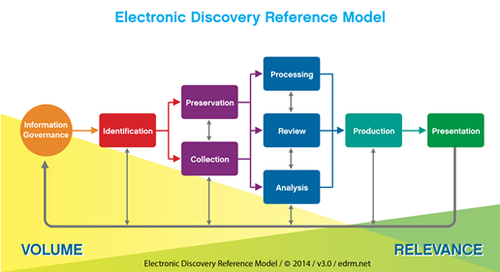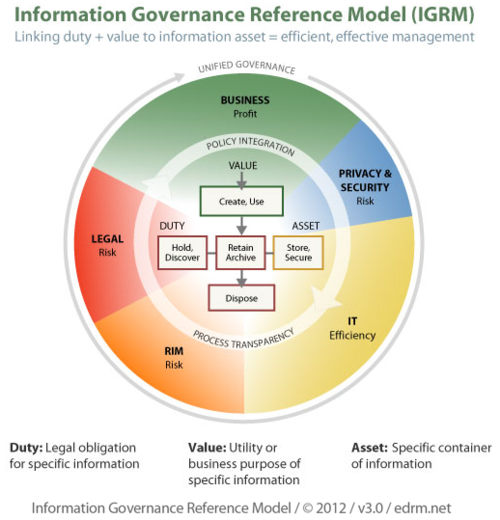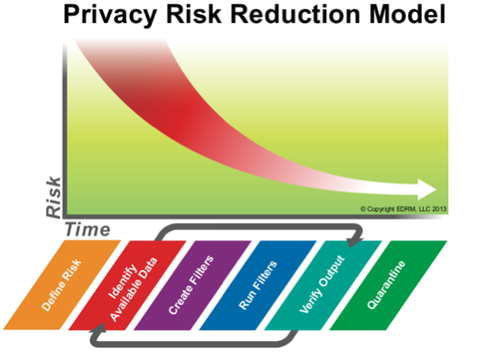This is the seventh of the 2014 LegalTech New York (LTNY) Thought Leader Interview series. eDiscoveryDaily interviewed several thought leaders after LTNY this year (don’t get us started) and generally asked each of them the following questions:
- What significant eDiscovery trends did you see at LTNY this year and what do you see for 2014?
- With new amendments to discovery provisions of the Federal Rules of Civil Procedure now in the comment phase, do you see those being approved this year and what do you see as the impact of those Rules changes?
- It seems despite numerous resources in the industry, most attorneys still don’t know a lot about eDiscovery? Do you agree with that and, if so, what do you think can be done to improve the situation?
- What are you working on that you’d like our readers to know about?
Today’s thought leader is George Socha. A litigator for 16 years, George is President of Socha Consulting LLC, offering services as an electronic discovery expert witness, special master and advisor to corporations, law firms and their clients, and legal vertical market software and service providers in the areas of electronic discovery and automated litigation support. George has also been co-author of the leading survey on the electronic discovery market, The Socha-Gelbmann Electronic Discovery Survey; in 2011, he and Tom Gelbmann converted the Survey into Apersee, an online system for selecting eDiscovery providers and their offerings. In 2005, he and Tom Gelbmann launched the Electronic Discovery Reference Model project to establish standards within the eDiscovery industry – today, the EDRM model has become a standard in the industry for the eDiscovery life cycle and there are nine active projects with over 300 members from 81 participating organizations. George has a J.D. for Cornell Law School and a B.A. from the University of Wisconsin – Madison.
What significant eDiscovery trends did you see at LTNY this year and what do you see for 2014?
I don’t think I saw any obvious new trends. It was a year of adjustments, rather than anything dramatic. When something dramatic shows up at LegalTech, usually it is because someone on the provider side has managed to catch a marketing wave and then everyone else is trying to ride that wave. There was the early case assessment wave, the predictive coding wave, but no new wave yet. The challenge is predicting what the new wave will be – like trying to predict what will go viral on the web. Although I am sure there is a lot of speculation about what the next big thing will be, if you look at past projections in the industry we frequently got it wrong. My guess is that the new wave will be a new wave precisely because it will come from an area we haven’t been paying much attention to.
Nonetheless, here are some thoughts. One, we are seeing consolidation on the software side of the industry. In any given area, review for example, we are seeing a limited number of offerings accounting of a substantial portion of the market. Part of what is changing here is that specific products are not dominating only because of appealing mixes of functions, features, pricing and marketing. They are establishing their holds by way of ecosystems built around their offerings – add-on tools, services offered in connection with the products, workflows built around the products, and the like. As anyone who has followed legal technology knows, those who are on top today most likely will not remain there forever, so we can expect to see some of today’s leaders drop down the list as others elbow their way up.
There continues to be much discussion about consolidation on the services side. There is a limited degree of consolidation to the extent that there are a number of mergers and acquisitions that have taken place, not just over the last year, but over the last few years. Were those acquired organizations not replaced by others, then we would be having real consolidation. But, I continue to see new service providers enter the marketplace – at least as rapidly as other providers are acquired, merged or disappear. So, there is no meaningful consolidation on the service provider side – not if consolidation is defined as fewer players in the market.
Another thing that I’m seeing is the beginning of a change in focus. Although many of the folks at LegalTech continue to cast production as the ultimate objective of e-discovery, a growing number are taking a newer – or really an older – approach. They are looking to how one might tease a story out of the data. This makes a lot of sense, because discovery isn’t intended to be a process unto itself; it’s meant to be part of a larger litigation or dispute resolution process. The reason that you’re engaging in discovery or, more specifically, in eDiscovery is to help bring a matter to a satisfactory resolution. I’m seeing more discussions and presentations about how eDiscovery fits into that larger context. This change in focus could become a trend or it could fizzle out. I think it ought to become a trend, but we’ll see.
With new amendments to discovery provisions of the Federal Rules of Civil Procedure now in the comment phase, do you see those being approved this year and what do you see as the impact of those Rules changes?
I think the second question is the more important question. I don’t see the proposed amendments achieving the type of meaningful change that people advocating for them hope to see. I think many people pushing for the changes feel the 2006 rules changes weren’t effective. If you look at why the 2006 changes have not been effective, I think it’s largely because people haven’t paid attention to them. If that is the case, what good will changing the rules again accomplish?
I think that a more effective approach would be more robust education for both judges and practitioners, with that education, especially the judicial education, coming from a broader range of educators than has been the case in the past. If we focus on judicial education, judges should be hearing from the attorneys who are actually doing the work. They also ought to be hearing from the corporate, governmental and similar people who are the end clients. And, they ought to be hearing from the service and software providers. As long as education to judges doesn’t include strong and well thought out insight from those three areas, the judges are going to find it difficult to get the education they need to be more effective in implementing the 2006 changes – never mind any changes that may come from the must recent push to amend the rules.
By the way, it would be unfair to lay this problem at the foot of the judiciary. By and large, judges do and should turn to litigants to better understand the particulars of “where the rubber hits the road” with electronic discovery issues in matters before them. The litigants themselves, the lawyers, are doing a terrible job of educating the judges because, by and large, they have not attempted to educate themselves about such aspects of eDiscovery as the 2006 rules changes. If the lawyers appearing before judges haven’t educated themselves about the 2006 changes, why do we think it will be any different with changes in 2014?
It seems despite numerous resources in the industry, most attorneys still don’t know a lot about eDiscovery? Do you agree with that and, if so, what do you think can be done to improve the situation?
This is a problem. I wish I had a quick and easy answer, but I don’t. Most attorneys don’t know enough about the theory or practice of eDiscovery. For all the conferences and webinars held on such topics, they don’t seem to reach the bulk of practicing attorneys. I suspect that the only real answer is time – and a lot of it. .
No matter have good the content delivered at programs such as LegalTech, it is clear that these programs are mostly attended by a small cadre of people who keep running into each other. Look at the first two days at LegalTech; they are like a class reunion. You see all your old friends, people in the “bubble” who deal with electronic discovery a lot. It’s our “same old, same old”. Most of us could spend 2 1/2 days debating one small arcane issue within eDiscovery. There are over 2 million attorneys practicing in the US and they are not in this “bubble” – maybe, at most 2,000 are.
Then you get the third day of LegalTech. Every year I hear the providers complaining that’s the day when people show up looking for baubles and other little giveaway items. Providers bemoan that those attendees are not there for substantive content and they’re not there to really understand what the exhibitors have to offer – they just want free stuff to fill their shopping bag. And, in some way, the real problem is that those are exactly the people we need to reach and those are clearly the people we are not reaching.
How do we reach those folks? Many ask that question, but so far not have found an effective answer. eDiscovery needs to “cross the chasm” (as in Geoffrey Moore’s book Crossing the Chasm where you have that big gulf between the early adopters and the rest of the people). In the larger legal world, we have not crossed the chasm at all when it comes to eDiscovery. Within the eDiscovery world, you could argue that we’ve crossed the predictive coding chasm, or you could argue that we haven’t, but at least it’s a debate. I don’t think there is even a debate in the larger legal world as to whether eDiscovery has crossed the chasm, it has not.
What are you working on that you’d like our readers to know about?
Several things: We keep pushing EDRM forward. For the last four or five months we have put out a monthly EDRM update highlighting the many things we are working on – frameworks, standards and resources. In addition, we have begun the process of making EDRM a 501(c)(6) trade organization. There are several reasons for doing this, but the main reason is to ensure that EDRM is well positioned so that we can look forward not just to the beginning of our tenth year in April, but to our 20th and our 30th years.
I’m also in the early stages of launching a new group called ABIKOS, a service and technology firm focused on the eDiscovery space. Our objective is to take discovery back to what it was meant to be – with the focus on bringing matters to a satisfactory resolution
As for Apersee, we’re in the early stages of Apersee version 3. We have some planning and discussion to do, but we hope in the coming months that you’ll see a greater emphasis on the areas that have actually been of interest to folks, changing the focus to the portions of it in which people have found the greatest value.
Thanks, George, for participating in the interview!
And to the readers, as always, please share any comments you might have or if you’d like to know more about a particular topic!
Disclaimer: The views represented herein are exclusively the views of the author, and do not necessarily represent the views held by CloudNine Discovery. eDiscoveryDaily is made available by CloudNine Discovery solely for educational purposes to provide general information about general eDiscovery principles and not to provide specific legal advice applicable to any particular circumstance. eDiscoveryDaily should not be used as a substitute for competent legal advice from a lawyer you have retained and who has agreed to represent you.










